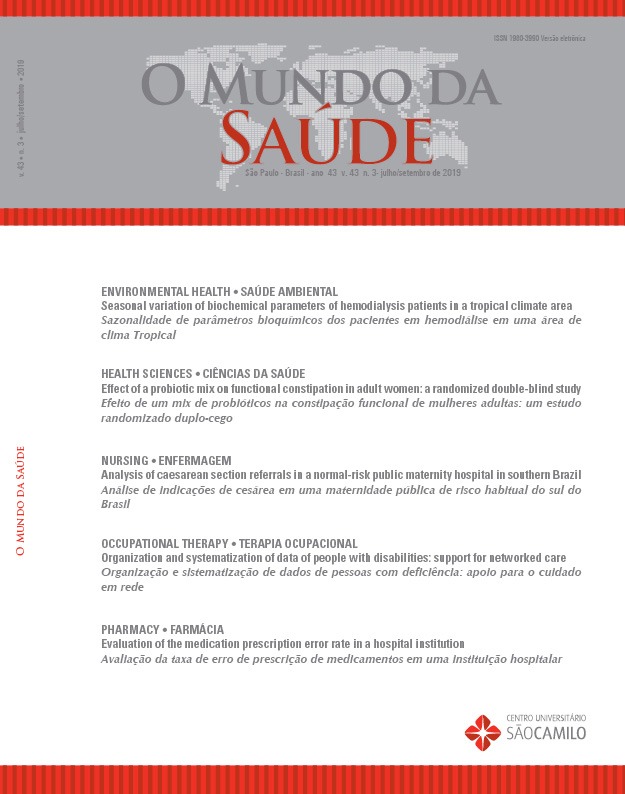Evaluation of the medication prescription error rate in a hospital institution
DOI:
https://doi.org/10.15343/0104-7809.20194303732746Keywords:
Patient Safety, Medication Use, Tertiary Health Care, Patient Care TeamAbstract
Medication error is any preventable event that, in fact or potentially, may lead to the misuse of medication, which may or may not cause harm to the patient. Measuring the error rate is one of the best indicators of the quality and safety of the medication process. The aim of this study was to identify medication prescription errors in a hospital institution in Campo Grande, MS. This was a cross-sectional and quantitative study, carried out from February to July 2018 by double checking the drug prescriptions, based on the recommendations of the Institute for Safe Practices for Medication Use and the Safety Protocol on Prescription, Use and Administration of Drugs. The study was approved by the Research Ethics Committee of the Federal University of Mato Grosso do Sul (opinion no. 2.519.750). A total of 5,890 drug prescriptions containing an average of 10.54 (±1.17) drugs per prescription were evaluated. Of the total, 3,289 medications were prescribed with some type of discrepancy with the recommendations of the aforementioned references, which represents a prescription error rate of 5.28%. The most frequent errors were drugs prescribed without a dosage (n=778; 23.65%), drugs prescribed without an infusion rate (n=682; 20.73%) and drugs prescribed with some divergence (n=319; 9.70%). The errors identified represent important indicators generated by the clinical pharmacy service of the institution and may contribute as a tool for decision making and pharmaceutical interventions with the multiprofessional health team, in view of patient safety and rational use of drugs.






























